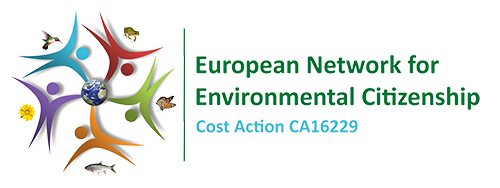Search Results Resources
You have searched in Resources with the following criteria: << Go Back
The search returned 9 results.
Benito Cao
- From
- 15
- To
- over 25
Environment and Citizenship
English
Australia
- Knowledge
- Skills
- Competencies
- Values
- Attitudes
- Behaviours
- Economic Aspects of Environmental Citizenship
- Social Aspects of Environmental Citizenship
- Political Aspects of Environmental
- Citizenship
- Environmental Citizenship General
- Collective actions
- Actions in Private sphere
- Actions in Public sphere
- Actions in Local scale
- Actions in National scale
- Actions in Global scale
- Addressing structural causes of environmental problems
- Achieving critical & active engagement and civic participation
- Practising environmental rights & duties
- Promoting inter- & intra-generational justice
- Developing healthy relationship with nature
- Achieving sustainability
- Sustain Environmental and Social Change
- Civic Participation
- Evaluation and Reflection
This book is the first introduction to the field of environmental citizenship. The book provides an accessible, stimulating and multidimensional overview of the many ways in which concern for the environment – driven primarily by the preoccupation with sustainability – is reshaping our understanding of citizenship.
Benito Cao
- From
- 15
- To
- over 25
Consuming Environmental Citizenship, or The Production of Neoliberal Green Citizens.
English
Australia
- Knowledge
- Values
- Attitudes
- Behaviours
- Economic Aspects of Environmental Citizenship
- Social Aspects of Environmental Citizenship
- Political Aspects of Environmental
- Citizenship
- Environmental Citizenship General
- Individual actions
- Collective actions
- Actions in Private sphere
- Actions in Local scale
- Actions in National scale
- Actions in Global scale
- Practising environmental rights & duties
- Developing healthy relationship with nature
- Evaluation and Reflection
This book chapter explores the neoliberalisation of environmental citizenship, with particular a particular focus on the production of neoliberal green subjects/citizens. The chapter examines three pedagogical instruments used to promote environmental citizenship: government campaigns, ecological footprint calculators, and media texts, in particular children's animation.
Benito Cao
- From
- 15
- To
- over 25
Learning Environmental Citizenship
English
Australia
- Knowledge
- Skills
- Competencies
- Values
- Attitudes
- Behaviours
- Economic Aspects of Environmental Citizenship
- Social Aspects of Environmental Citizenship
- Political Aspects of Environmental
- Citizenship
- Environmental Citizenship General
- Individual actions
- Collective actions
- Actions in Private sphere
- Actions in Public sphere
- Actions in Local scale
- Actions in National scale
- Actions in Global scale
- Achieving critical & active engagement and civic participation
- Practising environmental rights & duties
- Promoting inter- & intra-generational justice
- Developing healthy relationship with nature
- Achieving sustainability
- Civic Participation
- Evaluation and Reflection
This chapter outlines the main articulations of environmental citizenship that emerge from formal education, mass media and popular culture. The chapter includes a section on the most popular and widespread pedagogical device used to produce environmental citizens, the ecological footprint.


